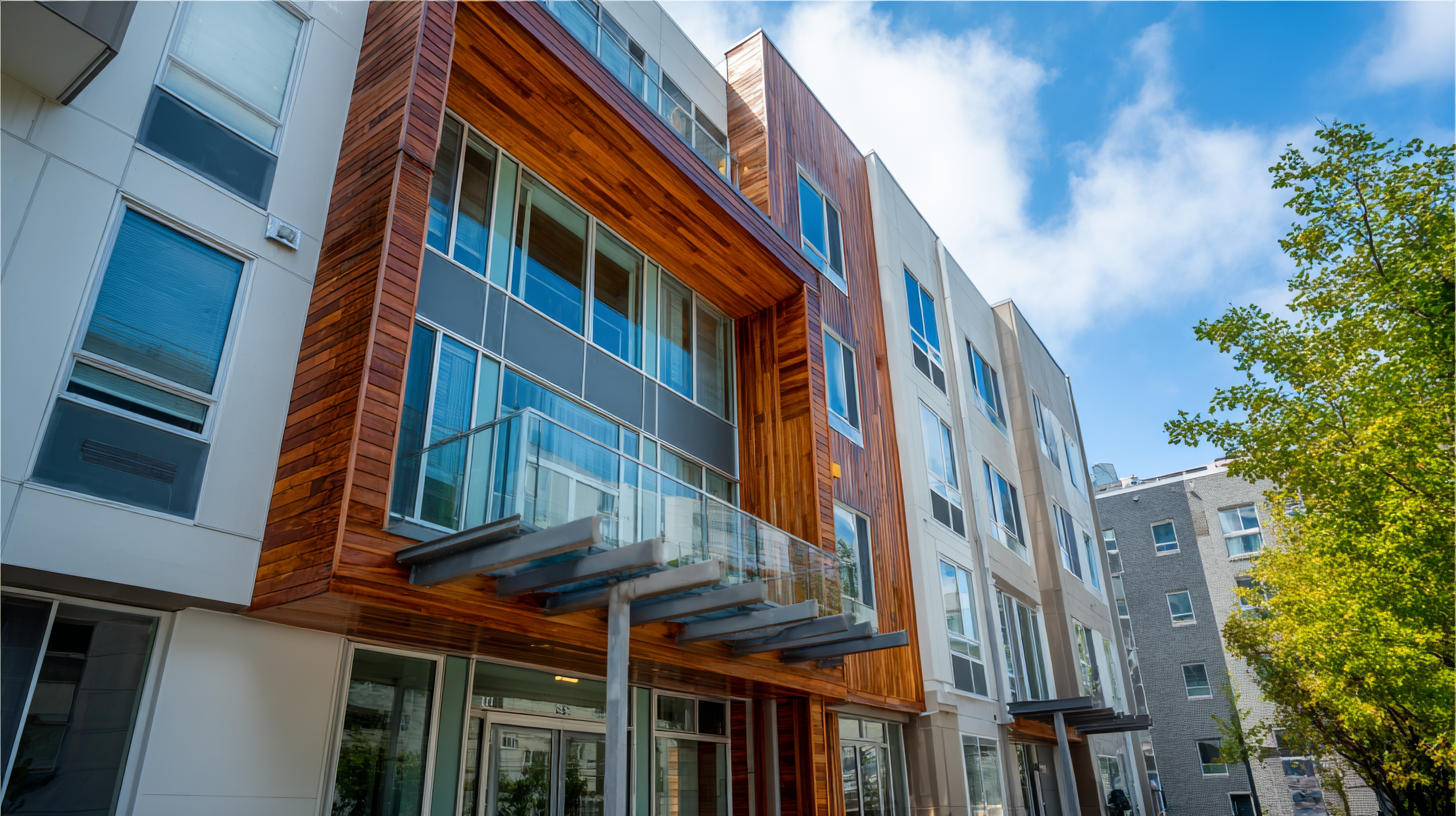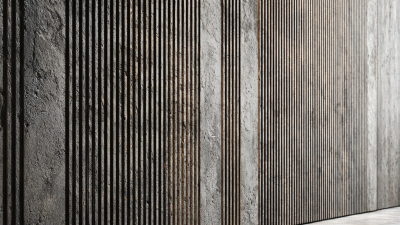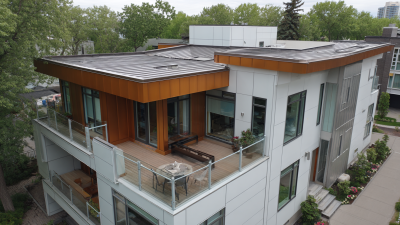In the realm of sustainable architecture, the significance of effective Building Wall design cannot be overstated. As we face the escalating challenges of climate change and resource depletion, innovative approaches to wall construction are essential for enhancing energy efficiency and environmental performance. According to the World Green Building Council, buildings account for approximately 39% of global carbon emissions, with walls playing a crucial role in thermal regulation and insulation. Effective wall design can reduce energy consumption by up to 20% as reported by the U.S. Department of Energy, while incorporating sustainable materials can further minimize the ecological footprint. Moreover, advancements in building technologies, such as prefabrication and smart materials, present opportunities to optimize the Building Wall’s functionality, promoting not only sustainability but also the resilience of structures against environmental stresses. This article explores the pivotal role of Building Wall design in achieving a sustainable future in architecture, highlighting best practices and innovative solutions that contribute to a low-impact built environment.

In sustainable architecture, wall design plays a crucial role in enhancing energy efficiency and harmonizing the building with its environment. Walls not only serve as the structural backbone of a building, but they also act as a thermal envelope that helps regulate indoor temperatures. By incorporating materials with high thermal mass, such as adobe or rammed earth, walls can absorb heat during the day and release it at night, reducing the need for artificial heating and cooling systems. This natural temperature regulation contributes to a building's sustainability by minimizing energy consumption and lowering carbon footprints.
Moreover, innovative wall designs can facilitate natural lighting and ventilation, further promoting sustainability. Features such as large windows, skylights, and cross-ventilation strategies are integral to wall design, allowing for ample daylighting that reduces reliance on artificial lights. Additionally, by integrating green walls or living facades, architects can enhance biodiversity while improving air quality and insulation. These design elements not only fulfill aesthetic and functional purposes but also embody a commitment to environmental stewardship, making wall design an essential focus in the pursuit of sustainable architecture.

Building walls play a crucial role in sustainable architecture, not only providing shelter but also contributing to energy efficiency and environmental protection. When designing walls, several key principles should be considered. First, the use of renewable materials, such as bamboo or recycled steel, can significantly reduce the carbon footprint of a building. Incorporating insulation techniques that minimize heat loss in winter and reduce excess heat in summer is also essential, as it enhances the overall energy performance of the structure.
Tips: When selecting materials, prioritize those with low embodied energy and high durability. This ensures that the wall won't need frequent replacement, reducing resource use over time. Additionally, remember to integrate natural ventilation within the wall design, as this can effectively regulate indoor temperatures and improve air quality without relying heavily on mechanical systems.
Another vital aspect of sustainable wall design is the integration of smart technologies. Automation systems can help monitor and control energy use, ensuring that heating and cooling are optimized throughout the building's lifecycle. Furthermore, using green roofs or vertical gardens not only provides insulation but also promotes biodiversity and aesthetic appeal.
Tips: Consider how walls can interact with the surrounding environment, enhancing natural light and reducing reliance on artificial lighting. Sustainable wall design isn't merely about materials; it's also about creating spaces that harmonize with nature and serve the community effectively.
Innovative materials play a crucial role in eco-friendly wall design, addressing both aesthetic and environmental challenges in sustainable architecture. With the growing demand for energy-efficient buildings, architects are increasingly utilizing materials such as rammed earth, bamboo, and recycled steel. Rammed earth walls, for instance, provide excellent thermal mass, reducing the need for heating and cooling while enhancing indoor air quality. Similarly, bamboo, known for its rapid growth and strength, offers a sustainable alternative to traditional timber, effectively minimizing deforestation impacts.
In addition to traditional materials, the advent of advanced technologies has paved the way for innovative options such as autoclaved aerated concrete (AAC) and green insulation systems made from recycled products. AAC is lightweight yet durable, providing superior insulation that contributes to lower energy consumption. Concurrently, green insulation materials, like those derived from recycled denim or sheep's wool, not only improve thermal performance but also help in reducing waste. By incorporating such innovative materials, designers can create structures that are not only visually appealing but also aligned with ecological principles, thus promoting a more sustainable approach to architecture.
The integration of technology in building wall design plays a pivotal role in enhancing sustainability within architecture. Modern advancements in materials science have led to the development of energy-efficient wall systems. According to the U.S. Department of Energy, buildings account for around 40% of the nation’s total energy consumption, with walls being a significant contributor to heat loss or gain. By incorporating high-performance insulation, reflective materials, and smart sensors, architects can significantly reduce the energy load required for heating and cooling.
Furthermore, the incorporation of renewable energy technologies, such as photovoltaic wall systems, has revolutionized how buildings interact with their environment. A report from the International Energy Agency indicates that integrating solar technology into building facades can lead to energy savings of up to 30% over traditional designs. Additionally, the use of advanced building information modeling (BIM) allows for precise optimization of wall materials and structure, facilitating more effective designs that diminish environmental impact. As the construction industry moves towards greener practices, the significance of technology in sustainable wall design will only continue to grow.
| Dimension | Description | Sustainability Factor | Technological Integration |
|---|---|---|---|
| Material Efficiency | Use of recycled or sustainably sourced materials. | High | Use of BIM for material tracking. |
| Thermal Performance | Insulation efficiency to reduce energy consumption. | Very High | Smart glass technology for temperature regulation. |
| Water Management | Design features to manage rainwater and reduce runoff. | Medium | IoT sensors for monitoring moisture levels. |
| Aesthetic Value | Visual appeal that complements the environment. | Medium | 3D modeling for aesthetic simulations. |
| Indoor Air Quality | Materials and designs that promote healthy air. | High | Air quality monitoring systems integrated with HVAC. |
In exploring successful sustainable wall design implementations, several case studies highlight innovative solutions that harmonize aesthetics with environmental considerations. One notable example is the Bosco Verticale in Milan, Italy. This residential complex features vertical gardens on its walls, which not only enhance the building's visual appeal but also promote biodiversity. The integrated greenery helps to absorb CO2, moderate temperatures, and improve air quality, showcasing how wall design can contribute to the overall sustainability of urban environments.

Another exemplary case is the Edge in Amsterdam, recognized as one of the greenest buildings in the world. The wall design incorporates advanced insulation materials and solar panels, allowing the structure to harness renewable energy while maintaining optimal thermal performance. This approach significantly reduces energy consumption and increases occupant comfort. Such implementations demonstrate that creative wall designs are essential not only for architectural beauty but also for achieving sustainability goals and fostering healthier living spaces.






